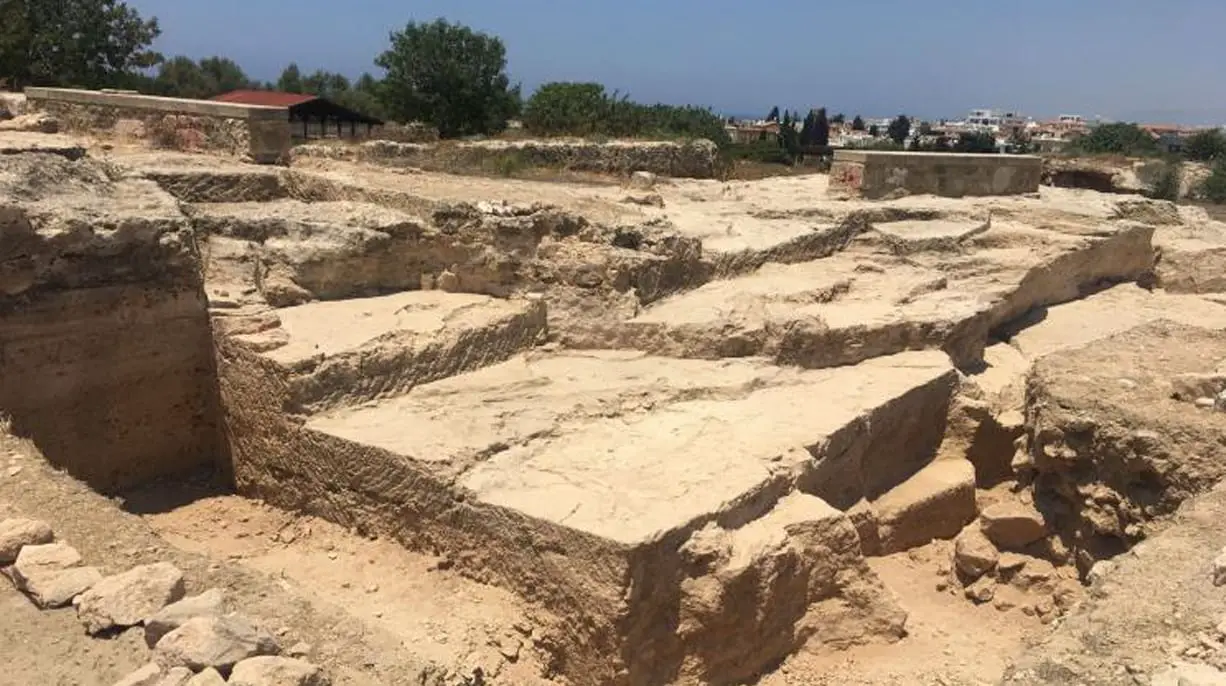Archaeologists excavating the ruins of Nea Paphos in Cyprus have discovered a 2,000-year-old rock-cut banqueting site.
Nea Paphos was founded on the south-western part of Cyprus during the 4th century BC, and was occupied throughout the Hellenistic period where it was the island’s capital under the Ptolemies, and later during the Roman period.
Since 2017, a multinational team of researchers from Poland and France has been studying the southern part of Fabrika Hill, where they recently uncovered the open-air banqueting site next to the hills highest point, where a temple is also located.
The outline of the banqueting site was carved in rock, and was probably used for the consumption of animals sacrificed to the gods on an adjacent monumental altar. Feasting in honour of the gods, sometimes combined with the consumption of sacrificial meat, and always with drinking alcohol, was a common ritual not only in Cyprus, but in many Mediterranean cultures.
Similar sites are found in Jordan from the Nabatean kingdom of Petra, where they accompanied both tombs and places of traditional worship. Archaeologists told PAP that “this is the first site of this type unearthed in Cyprus, where the ramp leading from the temple adjoined a multi-step bench carved in the rock.”
Prof. Jolanta Młynarczyk from the Faculty of Archaeology at the University of Warsaw stated: “It was a place for open-air religious banquets, the characteristic semi-circular outline of which is referred to in archaeology as a stibadium. Its central point was a circular depression with a drain, used for libations in honour of a deity.”
According to the research team, the temple and the place of libation were in use between the 2nd century BC and the mid-2nd century AD, but was likely abandoned due to an earthquake around 150 AD.
Archaeologists are yet to identify the deity worshiped on the hill, but they assume that it was the patroness of Nea Paphos – Aphrodite Paphi.
“Our archaeological team is currently facing further tasks related to the comprehensive examination of the sacred area on Fabrika Hill, leading to the final identification of the cult of deities or deities worshiped here in the Hellenistic and early Roman periods” – emphasizes Prof. Młynarczyk.
Header Image – View of the entrance ramp to the temple with the stibadium in the background (right). Image Credit : Anna Kubicka)





